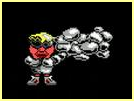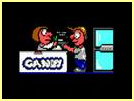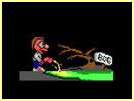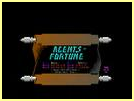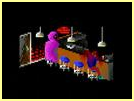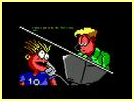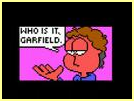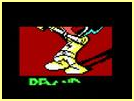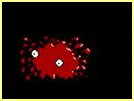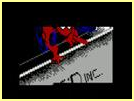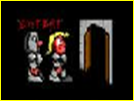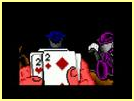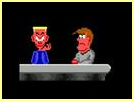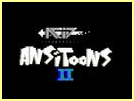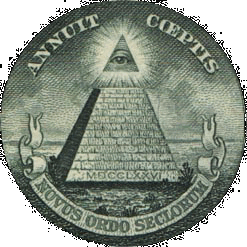 You might wonder what this weird title means. It is long and actually a short list. Somebody noted somewhere today something very interesting. The list of today's top five movies based on number of views at Google Video reads as follows.
You might wonder what this weird title means. It is long and actually a short list. Somebody noted somewhere today something very interesting. The list of today's top five movies based on number of views at Google Video reads as follows. Zeitgeist (remastered) or Old Ed., alternative URL
Zeitgeist (remastered) or Old Ed., alternative URL Endgame- Alex Jones - Blueprint for Global Enslavement
Endgame- Alex Jones - Blueprint for Global Enslavement The Secret Government: The Constitution in Crisis
The Secret Government: The Constitution in Crisis America: Freedom to Fascism
America: Freedom to Fascism Money as Debt by Paul Grignon
Money as Debt by Paul Grignon
Update March 24, 2008: It's odd that less than two months after I posted this, ALL 5 videos were taken down from Google Video. Don't worry, they were uploaded again and again by other people, which is actually fine, because most of the movies were released under the creative commons license that allows free replication and public display for non commercial purposes. All links are fixed for now. Let's wait and see if it lasts this time.
This is pretty remarkable in my opinion. You might ask, why that is, if you don’t know what those videos are about. If this is the case, I would actually suggest watching them all.
I recommend watching them in a different order than they rank, start with "Money as Debt" (5), then watch 4 and 1, then 3 and last but not least 2. You won’t be able to watch them all in a row. This is another curiosity considering that Google Video is a social video sharing site where people are supposedly consuming video in only small few minutes’ long chunks. The five videos listed represent actually over 8 hours of video to watch.
I won't go into details about each of the five videos, but I will give you some hints.
The fifth video "Money as Debt" would probably be better titled as "What is money and where does it come from?"
Those questions are very nicely answered in an illustrative and entertaining way. I am sure that most of you are in for a surprise and learn that everything you thought about money is wrong. I was "enlightened" several years already, because for a reason unknown to me, did my social studies teacher in college covered this subject. I learned in the video that this is something that is carefully avoided in American schools and that most people have no idea about how things really work and honestly didn't even spend much thought on it either.
"America: Freedom to Fascism" and "Zeitgeist" are a natural progression of the subject that explain even more things beyond money about how our society works today and that things are not working the way most people belief them to work.
"The Secret Government" is the only video that is older than 2007 or 2008. It is actually over 20 years old, from 1987 and about the Iranian hostage and arms deal affair that also involves the Honduran "Contras" during the Reagan administration. You might recall, that the CIA was selling illegally weapons to the Iranian regime to get some American hostages released and was at the same time ceasing the opportunity to make some arm deals with the Contras in Honduras, something that the U.S. Senate specifically declared to be unlawful and forced to stop (officially that is).
It was interesting to learn, that the "Enterprise" which was pulling all the strings and created in secret to continue to support the "freedom fighters" in Honduras was actually not that idealistic as they would like to appear to be, they were selling arms to the Contras for profits. The "Enterprise" generated an estimated $3.5 Mio in profits from the deals with the Contras as was also holding $8.0 Mio in cash stashed away on secret Swiss bank accounts. That money consisted mostly of contributions by supportive industrialists, individuals and not corporations of course.
General Richard V. Secort (the "CEO" of the "Enterprise", was asked during a hearing before Congress:
"If the purpose of the enterprise was to help the contras why did charge collateral markup that included a profit?"
General Richard V. Secort replied
"We were in business to make a living senator … It was a commercial enterprise."
Senator:
"But I thought that the purpose of the enterprise was to aid Calero's cause."
Mr. Secort asked the senator
"Can I have two purposes? … because I did."
John Poindexter, US national security advisor, was even better in his responses.
Senator:
"What was the reason to withhold information from congress when they inquired about it?"
Poindexter:
"I simply didn't want any outside interference."
Senator:
"Now the outside interference you are talking about was congress and I take it the reason why they were inquiring was precisely so that they could fulfill with information their constitutional function to pass legislation, one way or the other, isn't that true?"
Poindexter:
"Yes, I suppose that is true"(His "Haehhh?" looks make me doubt that he believed his own answer actually.)
Senator:
"And that you regarded as outside interference?"
But at least did Mr. Reagan's advisors learn from the mistakes of previous administrations. Former president Nixon just said it in 1986, a year before the hearing to the Iran-Contra affair: "Just destroy all the tapes!"
Lieutenant Colonel Oliver North, who was later convicted for his crimes was actually proud of his achievements in this regard.
Senator:
"Where are those memoranda?"
North:
"Which memoranda?"
Senator:
"The memoranda that you sent out for seeking the president's approval."
North:
"I think I shredded most of that, did I get them all? I am not trying to be flipping, I am just…"
Senator:
"Oh that was gonna be my next question, Colonel North, isn't it true that you shredded them?"
North:
"I believe I did."
Can you believe that? I mean they screwed up big time, that's one thing, but what they later said about the how and why should make everybody fear for the worst when it comes to the current administration. When you watch the documentary and forget for a moment that it is from 1987, replace "Communists" with "Terrorists" and "Honduras" with "North Korea", everything seems to be quite current and not like something from 20+ years in the past.
The documentary "Endgame" talks about those kind of people and what they do, think and why. It is about the "Bilderberger" primarily and some other stuff to put things into the right historic perspective. See this article on the web for additional background information to the documentary.
Sorry, if the world you were living in until today was all peachy. I didn't mean to ruin it for you. I also don't want you to go up in arms and start a war. Just think about it and act peacefully at times when it matters. You will know when that is needed.
Cheers!
Carsten aka Roy/SAC
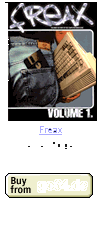
 He starts with the development of the first computers from the 1960s that were capable of displaying graphics rather than just perform mathematical calculations and return the results in text format. The first cracked software appeared on the Apple II computer at the end of the 1970s, but cracks were done by individuals who just removed the copy protection and then copied the software for friends etc. It was mostly unknown who cracked a specific program, because the cracker did not include any credits or reference that pointed to him.
He starts with the development of the first computers from the 1960s that were capable of displaying graphics rather than just perform mathematical calculations and return the results in text format. The first cracked software appeared on the Apple II computer at the end of the 1970s, but cracks were done by individuals who just removed the copy protection and then copied the software for friends etc. It was mostly unknown who cracked a specific program, because the cracker did not include any credits or reference that pointed to him.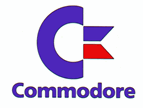 Cracking groups appeared on the Commodore 64, which was released in 1983. It was around 1985 that cracking groups started to add little programs to the cracked programs that were developed by the cracker groups themselves. Before that was it common to simply alter some text in the program to put their names into the cracked software.
Cracking groups appeared on the Commodore 64, which was released in 1983. It was around 1985 that cracking groups started to add little programs to the cracked programs that were developed by the cracker groups themselves. Before that was it common to simply alter some text in the program to put their names into the cracked software. 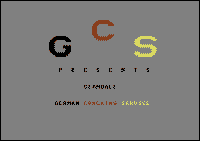 A favorite spot were the high score tables of games. The limit of three characters in those high score tables, something that was adapted from video arcade games, is the reason for the 3 letter abbreviations of oldskool cracking groups, such as TRD for Triad, DTC for Dytec or Dynamic Technologies, GCS for German Cracking Service (who created one of the very first intros), RZR for Razor 1911 or RSI for Red Sector Inc. (which later merged with Tristar to become TRSI).
A favorite spot were the high score tables of games. The limit of three characters in those high score tables, something that was adapted from video arcade games, is the reason for the 3 letter abbreviations of oldskool cracking groups, such as TRD for Triad, DTC for Dytec or Dynamic Technologies, GCS for German Cracking Service (who created one of the very first intros), RZR for Razor 1911 or RSI for Red Sector Inc. (which later merged with Tristar to become TRSI). Around the same time were also
Around the same time were also 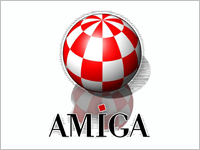 The Commodore 64 demo scene partially made the transition to the Commodore Amiga, although the C64 and Amiga demo scene existed parallel to each other for years to come. The Amiga demoscene really grew into something big in 1991, the year when the first demo party was held that had more than 1000 attendies, "The Party" 1991 demo party, held in December 1991 in Denmark.
The Commodore 64 demo scene partially made the transition to the Commodore Amiga, although the C64 and Amiga demo scene existed parallel to each other for years to come. The Amiga demoscene really grew into something big in 1991, the year when the first demo party was held that had more than 1000 attendies, "The Party" 1991 demo party, held in December 1991 in Denmark.  The demo that won the competion was "Oddyssey" by Alcatraz (a 45 minutes long demo that caused single handedly the introduction of the 10 minutes limit for demos from this point on), but the most memorable demo was probably "
The demo that won the competion was "Oddyssey" by Alcatraz (a 45 minutes long demo that caused single handedly the introduction of the 10 minutes limit for demos from this point on), but the most memorable demo was probably " Early productions were the 1991 mini-demo by Ultraforce Development or intros by Brain Slayer. The first real great demos that came out where Chronologia by Cascada, Triton's Crystal Dream 1 and especially Future Crew's "Unreal", which was released at the Assembly 1992 demo party in August 1992.
Early productions were the 1991 mini-demo by Ultraforce Development or intros by Brain Slayer. The first real great demos that came out where Chronologia by Cascada, Triton's Crystal Dream 1 and especially Future Crew's "Unreal", which was released at the Assembly 1992 demo party in August 1992.  The PC demo scene cached up with the flourishing Amiga demo scene in 1993 with demos like Future Crew's "
The PC demo scene cached up with the flourishing Amiga demo scene in 1993 with demos like Future Crew's "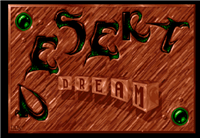 The top demo of the Amiga around this time was Kefrens' "
The top demo of the Amiga around this time was Kefrens' " Although large demo parties such as
Although large demo parties such as 


